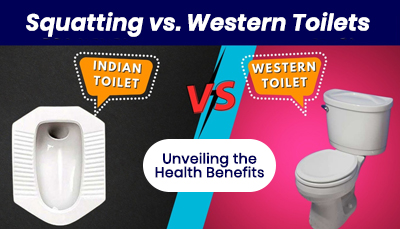
The choice between squatting and Western toilets can have significant implications for our digestive health. Recent research and articles highlight several benefits of squatting toilets that might make us reconsider our bathroom habits.
1. Improved Bowel Movements:
Squatting during bowel movements aligns the rectum and anus in a natural position, facilitating easier and more complete evacuation. This position reduces straining, which is a significant cause of hemorrhoids and constipation. The squatting position straightens the anorectal angle, making it easier to pass stools with less effort.
2. Reduction in Hemorrhoids:
By promoting a straighter passage for stool to pass through, squatting can significantly lower the incidence of hemorrhoids. In Western countries, where sitting toilets are prevalent, nearly half the population suffers from hemorrhoids by age 50 due to the increased strain involved in bowel movements.
3. Lower Risk of Other Digestive Issues:
Squatting is believed to reduce the risk of conditions such as irritable bowel syndrome (IBS), appendicitis, and fecal stagnation, which can lead to colon cancer. The natural squatting position aids in better emptying of the bowels, minimizing these risks.
4. Sanitation and Hygiene:
Squatting toilets generally involve less physical contact with toilet surfaces, which can be more sanitary and reduce the spread of germs and infections.
While Western toilets offer convenience, incorporating elements that encourage a squatting posture can provide a middle ground. Products like the Squatty Potty, a footstool designed to elevate the feet, help mimic the squatting position even while using a Western toilet. These adaptations can offer significant health benefits without requiring major changes to existing bathroom setups.
Raising awareness about the health benefits of squatting can encourage healthier practices. Many people are unaware of the potential health risks associated with prolonged sitting on Western toilets and the benefits of adopting a squatting posture. Educating the public on these issues could help reduce the prevalence of gastrointestinal problems and promote better overall health.
The design of our bathrooms has profound implications for our health. As we move towards more modern conveniences, it is essential to consider the insights from traditional practices. Integrating squatting elements into Western bathroom designs could lead to better digestive health and prevent common ailments associated with sitting toilets. This shift towards more ergonomic and health-conscious bathroom habits can significantly enhance our well-being.

